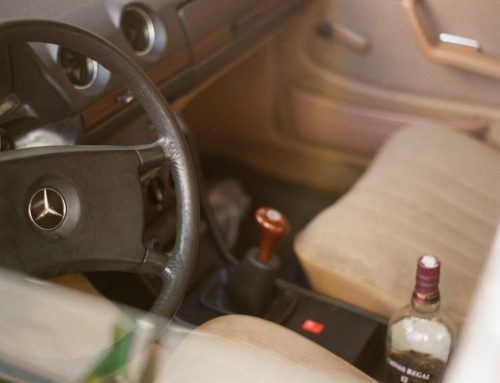Impaired driving is a serious criminal offence with dire consequences. You already know driving a motor vehicle after drinking alcohol over the legal limit is a bad decision that could have devastating results for you, your passengers, and others on the road.
Did you know that you could face charges for an offence if you are in care or control of a motor vehicle, even if you didn't do any actual driving? In this post, we will explain what it means to be "in care or control" of a motor vehicle and why you should contact an experienced driving offence lawyer if you are facing a related criminal charge.
What Is Care and Control?

You don't need to drive a vehicle after drug or alcohol use to face charges. Under Canadian law, you can be charged with a driving offence if you have 'care and control' which can cover much more than just actually driving.
In the context of impaired driving charges, it can refer to when there is clear evidence of care or control, or due to the presumption in the Criminal Code that a person has care of control if they are found in the driver's seat of a vehicle. Even a stationary or inoperable vehicle can result in care or control if there is a realistic risk that you could endanger other people or property.
Legal Interpretation
The interpretation of what care and control means can be difficult to assess as each factual situation is different. A police officer can evaluate the circumstances and determine if you have care or control of the vehicle and if your ability to drive a car is influenced by the use of drugs or alcohol.
Using this information to form the opinion that you are at fault and a potential danger gives the officer the right to demand a breathalyzer test and arrest you. Later on at trial, a Judge may find that you did not have care or control of the vehicle and result in an acquittal even if you were significantly impaired.
Common Mistakes
Many drivers believe that they are safe from impaired driving charges if they simply sit in the driver's seat or sleep in the vehicle until the effects of what they consumed wear off. However, as you have the ability to change your mind and drive away, the realistic risk of putting the public in danger is still present.
Demonstrating Care and Control
The definition of care or control was discussed by the Supreme Court of Canada in the case of R. v. Boudreault, 2012 SCC 56. While a proper analysis should always be done with the specific facts of each case in mind, there are a couple consistent principles:
- The accused had access to use of the vehicle, i.e. the keys were on their person
- The vehicle was on or could be put in motion
- The driver had the intention to drive but simply feel asleep before driving
- The driver had the ability to drive
- The vehicle creates a realistic risk of danger based on its location, even if it is off and stationary
Sitting in the driver's seat is a big indicator that you may have intended to operate the motor vehicle while impaired. Often, breathalyzer test results are used as evidence to prove that the driver was impaired. Other indicators that are used as proof include the smell of alcohol, slurred speech, and unsteady balance or inability to walk.
Crown counsel must prove the guilt of any person beyond a reasonable doubt for charges to stick. Criminal lawyers understand how to fight an impaired driving charge by raising a reasonable doubt that you had care or control as there was no significant risk that would endanger persons or other motor vehicles in proximity to the stationary vehicle.
Possible Exceptions to Care or Control Charges
Law enforcement takes the realistic risk of danger seriously and any person convicted faces serious charges. In some cases, your lawyer might be able to prove that there was a reason for you to sit in the driver's seat other than operating the vehicle, such as using the radio or activating the heat or air conditioning.
The Supreme Court of Canada recognises that it's possible to put a vehicle into motion unintentionally and still create a risk to the public. Even if you had no intention to drive but accidentally knocked the car into gear, you can be charged with having control of the vehicle.
Possible Exceptions to Care or Control Charges

If you are charged with impaired driving you are facing significant consequences. A care or control argument might create a defence and avoid any fines or penalties. A lawyer can help you understand these charges and prepare your defence. Penalties can include the following:
- A lifelong criminal record
- Fines
- Increased car insurance rates
- Jail time
- Suspension of your driver's licence
- Ignition Interlock installed in your vehicle
- Training or driver's education classes
- Potential loss of employment
The overall financial cost of a conviction is steep and can reach tens of thousands of dollars. This is one reason that an accused person should consider hiring a criminal lawyer.












